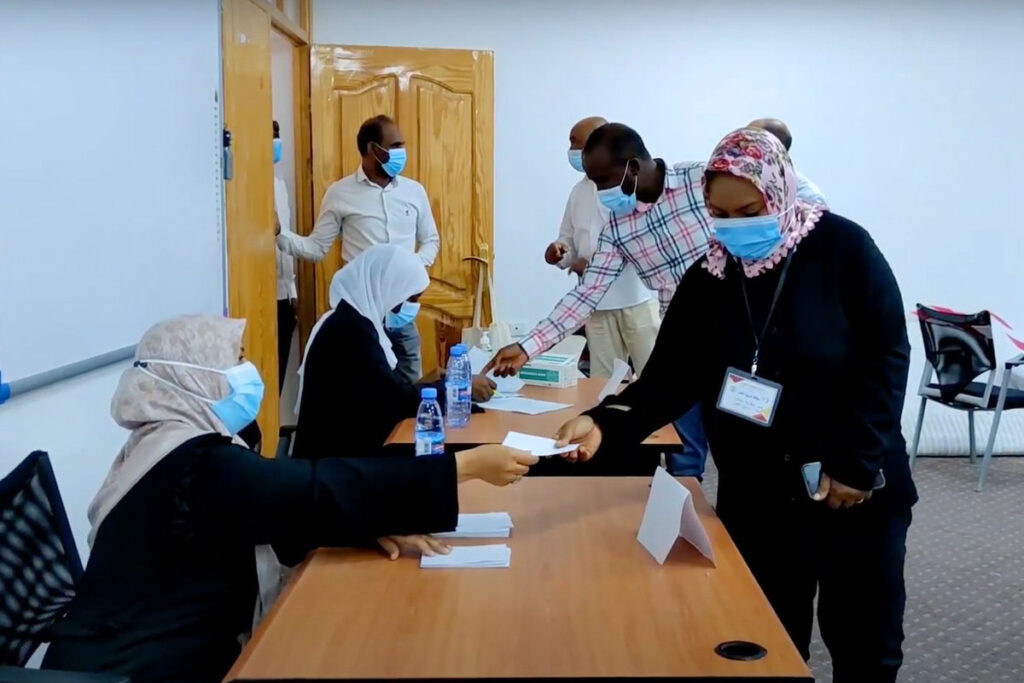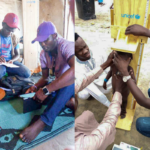Introduction
In the Fragile State Index (FSI) 2022 Annual Report, which compiles and ranks states according to their CAST score, Libya stands out as the fourth most improved state. During an internship at FFP, I was tasked with my co-author to review the change in FSI indicator scores to understand Libya’s improvement. In this blog post, I share how the CAST framework informed our work.
Our analysis found trends of decreasing fragility in Libyan society and showed the usefulness of using the CAST framework methodology to guide fragility research. Our findings were published as an analysis piece titled Grassroots Reconciliation: Civil Society’s Critical Role in Libyan Peacebuilding in the 2022 FSI Annual Report.
Background
The FSI and its state rankings come from the aggregate values of a complex system of four categories and twelve indicator groups that make up the CAST framework. The CAST framework is a multi-data analytical tool developed by the Fund for Peace to assess the conflict drivers and the fragility level of a particular state. The CAST framework triangulates three main streams of data to formulate indicator scores. These data streams are derived from pre-existing quantitative data sets, content analysis, and qualitative expert analysis. The CAST framework compiles these data sources and produces different numerical scores for each indicator that, when aggregated together, yields a state’s final ranking in the FSI. Thus, the CAST framework gauges state fragility in easily comparable and indexable numbers.
The CAST framework categories and indicators are as follows:
| Category | Indicators |
|---|---|
| Cohesion | Security apparatus Fractionalized elites Group grievances |
| Economic | Economic decline Uneven economic development Human flight and brain drain |
| Political | State legitimacy Public services Human rights and rule of law |
| Social and Cross-cutting | Demographic pressures Refugees and IDPs External intervention |
Context
Refugees and IDPS
The Refugees and IDPs indicator is a proxy for “the pressure upon states caused by the forced displacement of large communities as a result of social, political, environmental or other causes, measuring displacement within countries, as well as refugee flows into others,” (Page 12). The indicator assesses refugees by country of asylum, “recognizing that population inflows can put additional pressure on public services, and can sometimes create broader humanitarian and security challenges for the receiving state,” (Page 12). The indicator also measures the refugee and IDP countries of origin, “which signifies internal state pressures as a result of violence, environmental or other factors such as health epidemics,” (Page 12). Together, this indicator is considered within the context of state population, state development trajectory, and over time. Libya’s Refugee and IDPs indicator score dropped from 3.3 in 2021 to 3.0 in 2021.
Human flight and brain drain
The Human Flight and Brain Drain indicator assesses “the economic impact of human displacement (for economic or political reasons) and the consequences this may have on a country’s development,” (Page 9). This indicator looks at the migration of economically productive members of the population “due to economic deterioration in their home country and the hope of better opportunities farther afield,” (Page 9). The indicator also considers, “the forced displacement of professionals or intellectuals who are fleeing their country due to actual or feared persecution or repression, and specifically the economic impact that displacement may wreak on an economy,” (Page 9). Libya’s human flight and brain drain decreased from 5.4 in 2021 to 5.1 in 2022.
Economic decline
The Economic Decline indicator looks at factors that are “related to economic decline within a country,” (Page 8) in both formal and illicit markets. These factors include “patterns of progressive economic decline of the society as a whole as measured by per capita income, Gross National Product, unemployment rates, inflation, productivity, debt, poverty levels, or business failures,” (Page 8). This indicator also looks at “sudden drops in commodity prices, trade revenue, or foreign investment, and any collapse or devaluation of the national currency,” (Page 8). Additionally, this indicator considers, “the responses to economic conditions and their consequences, such as extreme social hardship imposed by economic austerity programs, or perceived increasing group inequalities,” (Page 8). Libya’s economy grew to a point that the Economic Decline indicator dropped from 9.6 in 2021 to 8.6 in 2022.
State legitimacy
The State Legitimacy indicator reflects “the representativeness and openness of government and its relationship with its citizenry,” (Page 10). This indicator not only looks at “the population’s level of confidence in state institutions and processes, and assesses the effects where that confidence is absent, manifested through mass public demonstrations, sustained civil disobedience, or the rise of armed insurgencies,” (Page 10) but also accounts for the nature of political transitions and the degree of population representation in the government. Included in the indicator as well is, “the openness of ruling elites to transparency, accountability and political representation, or conversely the levels of corruption, profiteering, and marginalizing, persecuting, or otherwise excluding opposition groups” (Page 10) and the ability for the government to exercise basic functions. Libya’s state illegitimacy dropped from 9.9 in 2021 to 9.4 in 2022.
Methodology
We centered our research on topical reports, recent background developments, analyses, and news articles. Our analysis used 24 sources that included research and analysis from the Middle East Institute and the United States Institute of Peace, project and annual reports from the European Union and the Department of State, news from Al Jazeera and Reuters, and many more.
Findings
CSOs promote peace, political transition, and dispute resolution to constitution-writing in Libya. This increase in peacebuilding efforts have helped contribute to some stability for civilians, refugees, and IDPs in Libya on the ground. With heightened security and reduced violence, human flight and subsequent brain drain due to the conflict diminished. Moreover, CSOs have worked with political entities in constitution-writing specifically related to the resettlement of IDPs.
CSOs in southwestern Libya have led a cross-tribal market project in Ubari that worked to not only ease tensions between the Tebu and Tuareg people, but also create spaces for local commerce. This market creation has, in turn, led to economic growth and community reconstruction that is now used as a model for similar projects in the city of Sebha and other communities in the Nafusa Mountains. Grassroots CSO leadership has therefore marshalled diversified and local economic growth, even as the government continues to rely on oil.
CSOs have also included themselves in the governmental shaping of Libya by exerting vertical influence on national institutions and dialogues. Through the drafting of the 2018 UN-backed Libyan National Conference Process, CSOs have used their involvement in the process to bring as many Libyan voices into the dialogue about Libyan state-building as possible. This has worked to better legitimize the state in the eyes of the population.
Implications
The CAST framework cannot predict the future. Though highly improved from 2021 to 2022, Libya still teeters on falling lower on the FSI fragility ranking. With continued strife, indicator advancements are at risk of backsliding. Thus, it becomes ever more critical to keep in mind the strengths and weaknesses of multi-data methodologies such as the CAST framework in the upcoming years to accurately assess Libya’s current fragility level and devise future policy.




